Advancements in Graph
Neural Networks:
PGNNs, Pretraining, and OGB
Jure Leskovec
Includes joint work with W. Hu, J. You, M. Fey, Y. Dong, B. Liu,
M. Catasta, K. Xu, S. Jegelka, M. Zitnik, P. Liang, V. Pande
�
Modern ML Toolbox
Images
Text/Speech
Modern deep learning toolbox is
designed for simple sequences & grids
Jure Leskovec, Stanford University
2
�
But not everything
can be represented as
a sequence or a grid
How can we develop neural
networks that are much more
broadly applicable?
New frontiers beyond classic neural
networks that learn on images and
sequences
Jure Leskovec, Stanford University
3
�
Representation Learning in Graphs
z
…
Input: Network
Predictions: Node labels,
New links, Generated
graphs and subgraphs
Jure Leskovec, Stanford University
4
�
Networks of Interactions
Social networks
Knowledge graphs
Biological networks
Complex Systems
Molecules
Jure Leskovec, Stanford University
Code
5
�
Why is it Hard?
Networks are complex!
§ Arbitrary size and complex topological
structure (i.e., no spatial locality like grids)
vs.
Text
Networks
§ No fixed node ordering or reference point
§ Often dynamic and have multimodal features
Images
Jure Leskovec, Stanford University
6
�
Graph Neural Networks
TARGET NODE
B
A
D
E
INPUT GRAPH
C
F
A
B
C
D
A
C
A
B
E
F
A
Each node defines a computation graph
§ Each edge in this graph is a
transformation/aggregation function
Scarselli et al. 2005. The Graph Neural Network Model. IEEE Transactions on Neural Networks.
Jure Leskovec, Stanford University
7
�
Graph Neural Networks
TARGET NODE
B
A
D
E
INPUT GRAPH
C
F
A
B
C
D
A
C
A
B
E
F
A
Neural networks
Intuition: Nodes aggregate information from
their neighbors using neural networks
Inductive Representation Learning on Large Graphs. W. Hamilton, R. Ying, J. Leskovec. NIPS, 2017.
Jure Leskovec, Stanford University
8
�
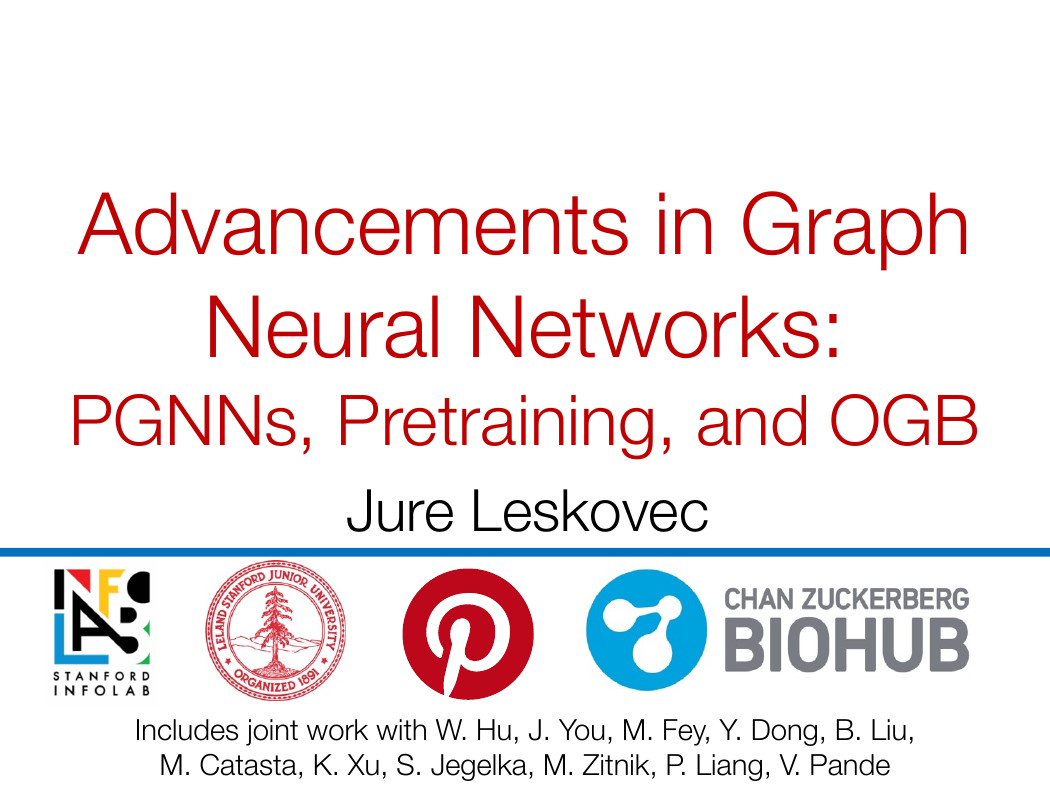
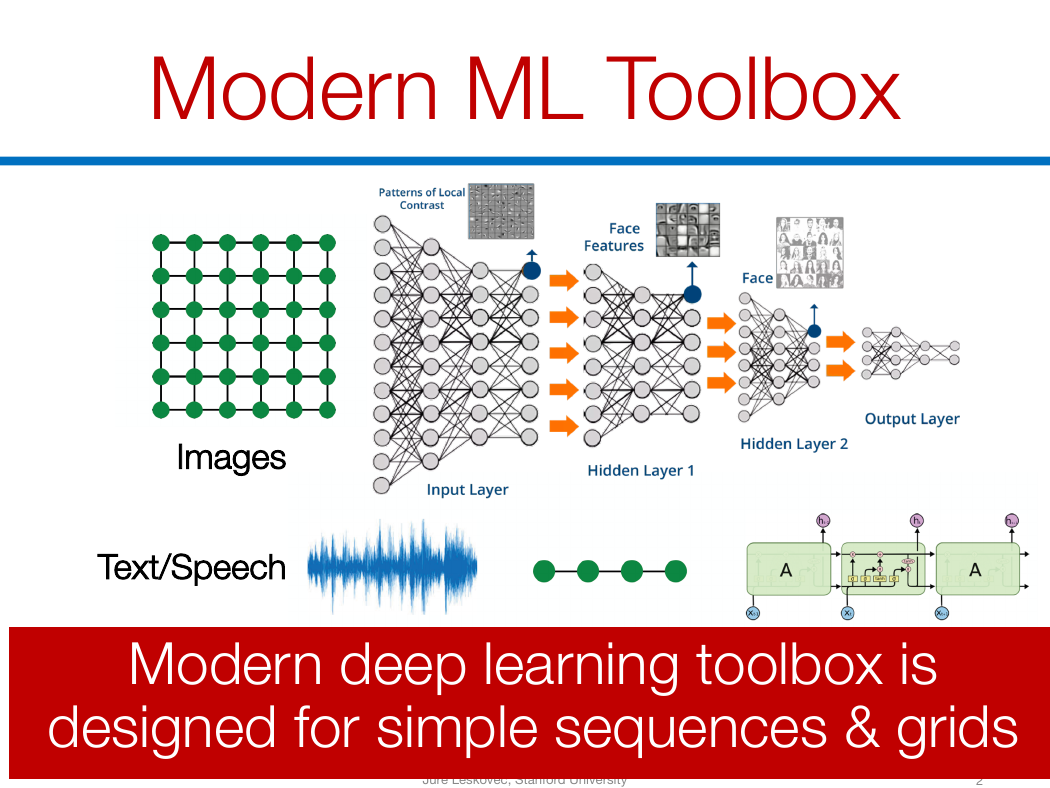
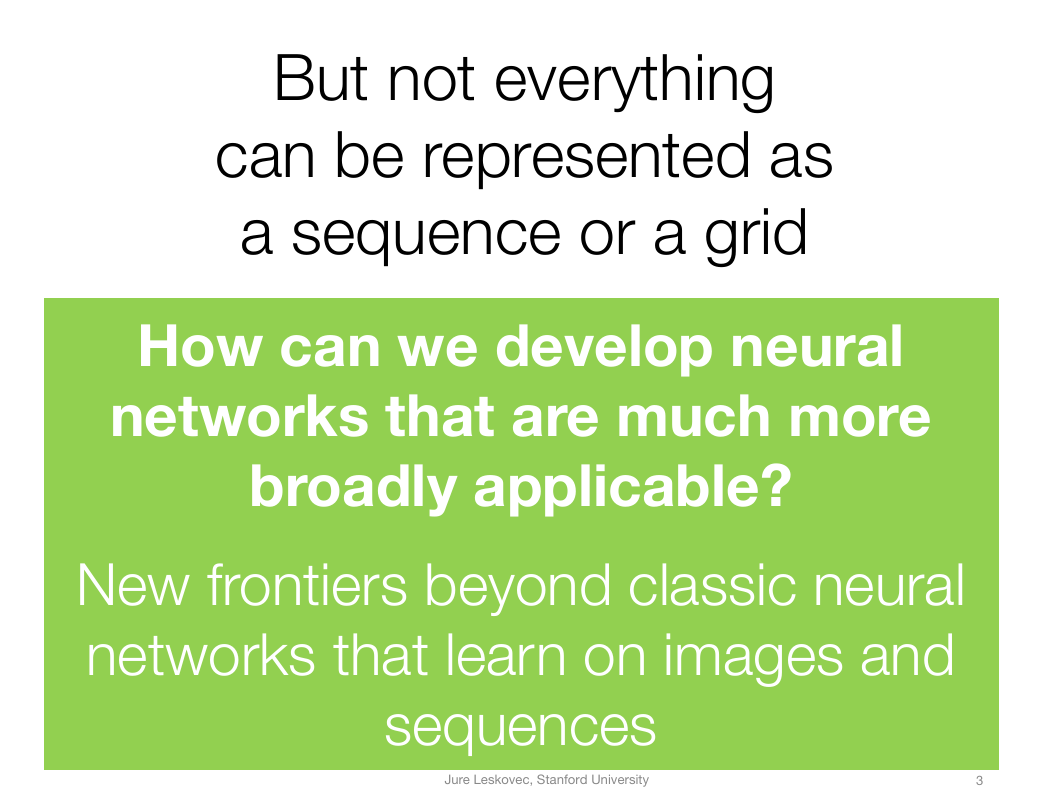
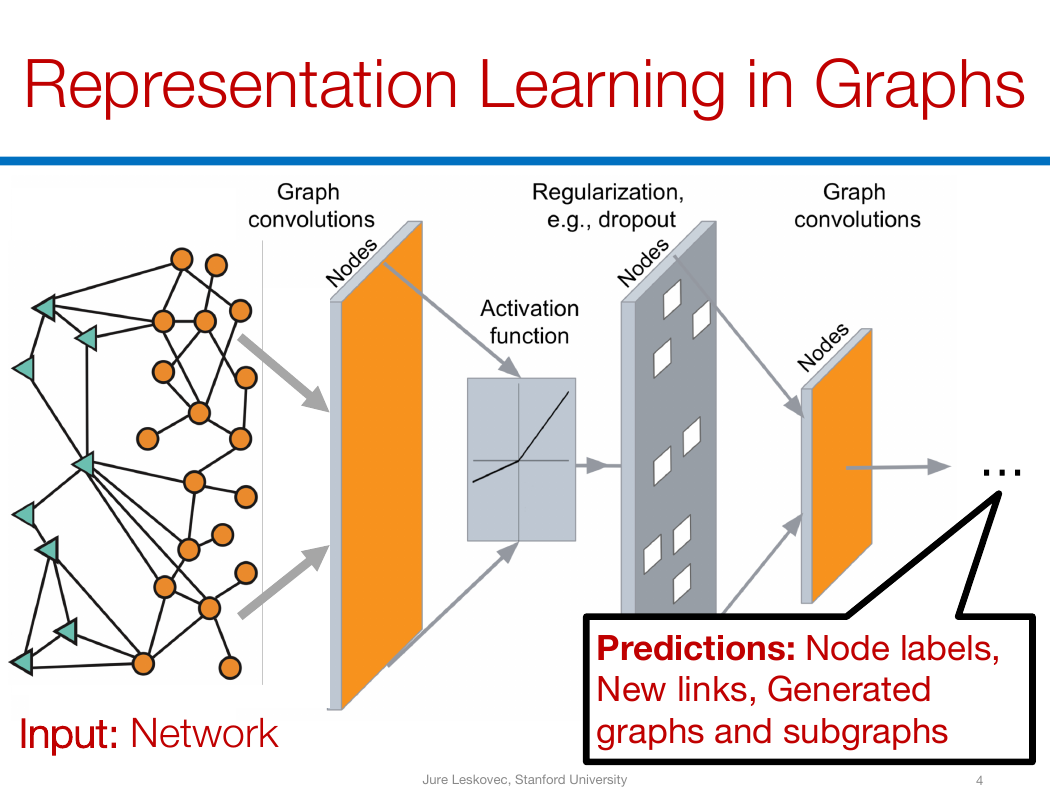
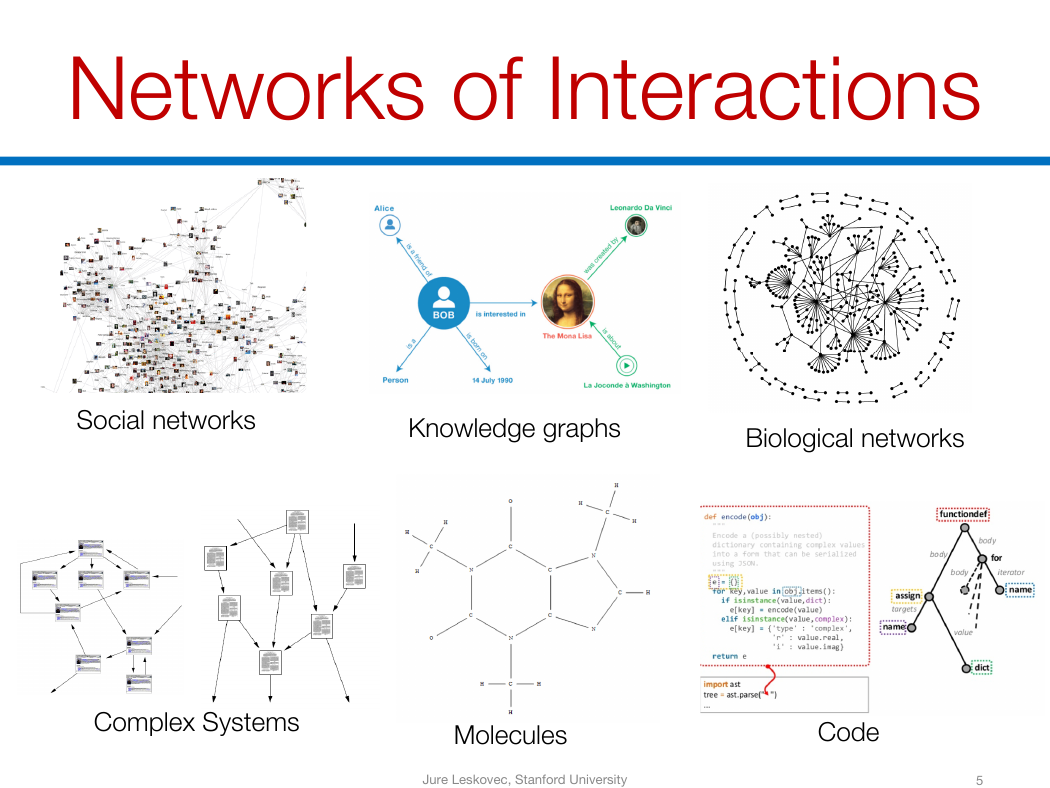
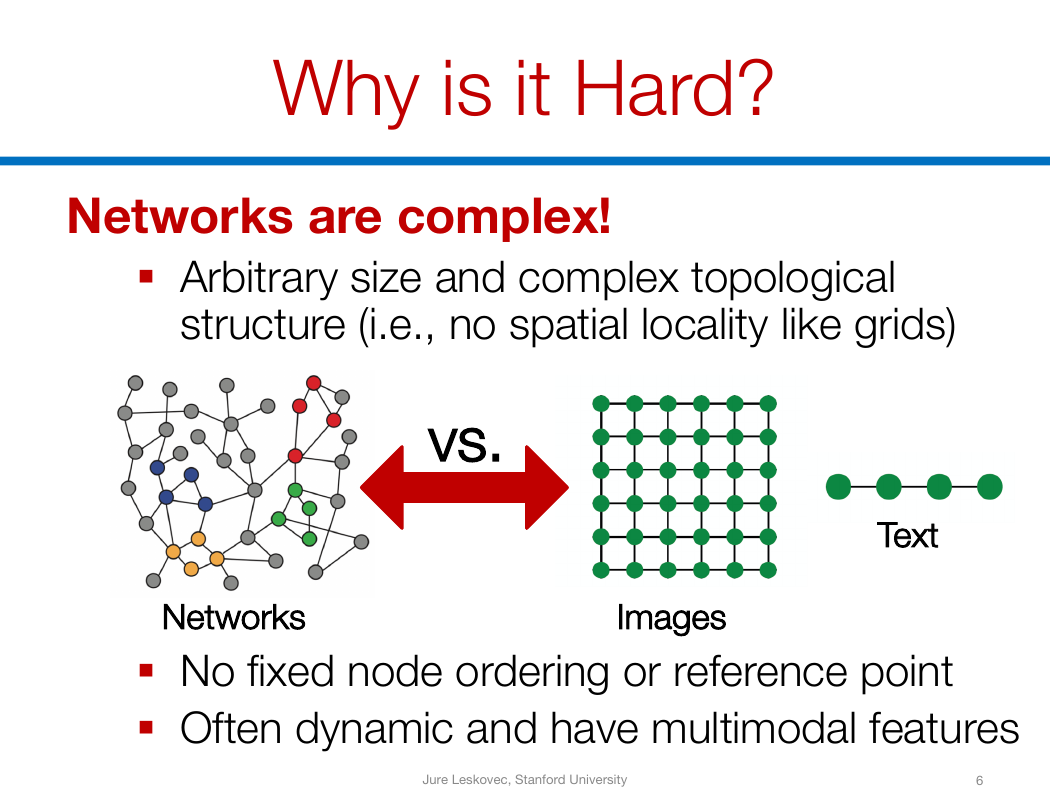
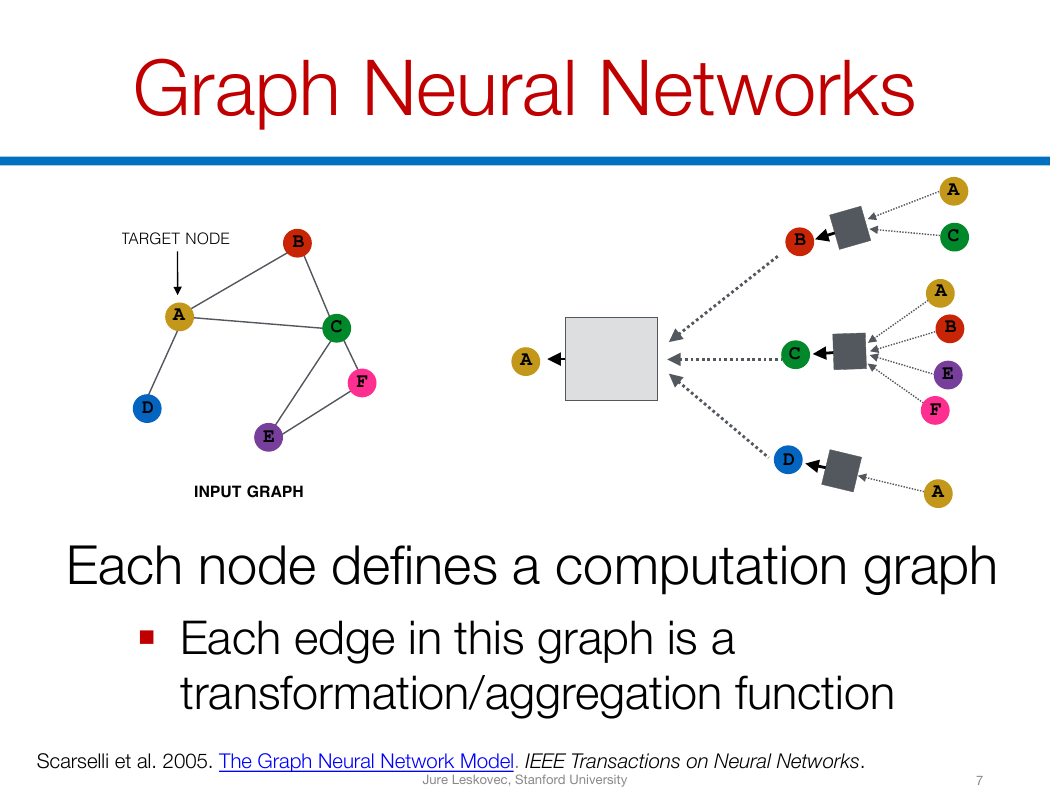
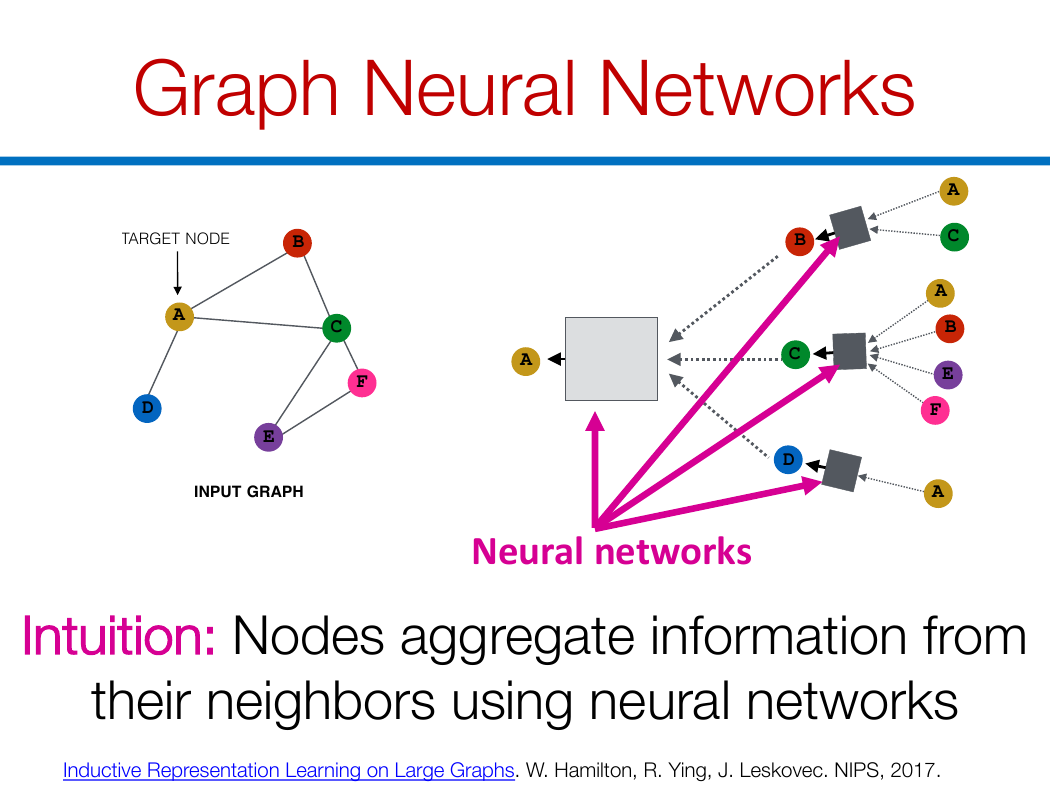








 2023年江西萍乡中考道德与法治真题及答案.doc
2023年江西萍乡中考道德与法治真题及答案.doc 2012年重庆南川中考生物真题及答案.doc
2012年重庆南川中考生物真题及答案.doc 2013年江西师范大学地理学综合及文艺理论基础考研真题.doc
2013年江西师范大学地理学综合及文艺理论基础考研真题.doc 2020年四川甘孜小升初语文真题及答案I卷.doc
2020年四川甘孜小升初语文真题及答案I卷.doc 2020年注册岩土工程师专业基础考试真题及答案.doc
2020年注册岩土工程师专业基础考试真题及答案.doc 2023-2024学年福建省厦门市九年级上学期数学月考试题及答案.doc
2023-2024学年福建省厦门市九年级上学期数学月考试题及答案.doc 2021-2022学年辽宁省沈阳市大东区九年级上学期语文期末试题及答案.doc
2021-2022学年辽宁省沈阳市大东区九年级上学期语文期末试题及答案.doc 2022-2023学年北京东城区初三第一学期物理期末试卷及答案.doc
2022-2023学年北京东城区初三第一学期物理期末试卷及答案.doc 2018上半年江西教师资格初中地理学科知识与教学能力真题及答案.doc
2018上半年江西教师资格初中地理学科知识与教学能力真题及答案.doc 2012年河北国家公务员申论考试真题及答案-省级.doc
2012年河北国家公务员申论考试真题及答案-省级.doc 2020-2021学年江苏省扬州市江都区邵樊片九年级上学期数学第一次质量检测试题及答案.doc
2020-2021学年江苏省扬州市江都区邵樊片九年级上学期数学第一次质量检测试题及答案.doc 2022下半年黑龙江教师资格证中学综合素质真题及答案.doc
2022下半年黑龙江教师资格证中学综合素质真题及答案.doc